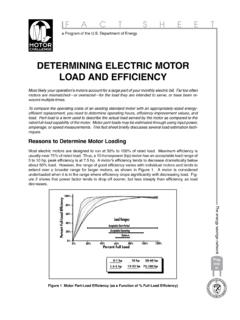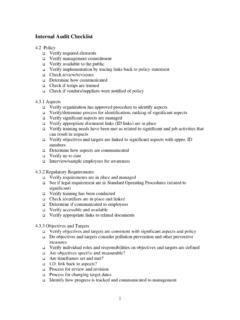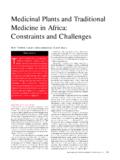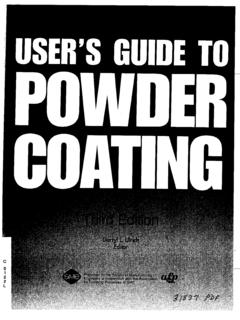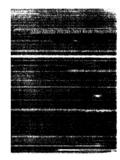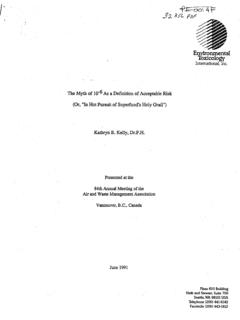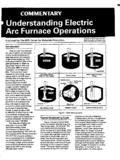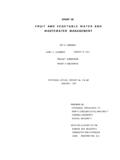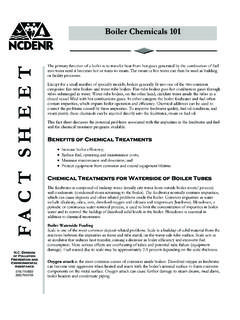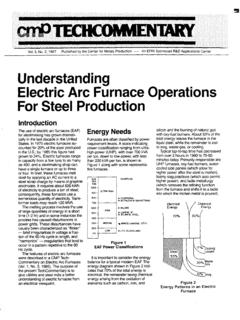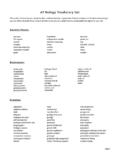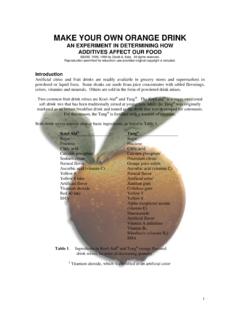Transcription of Acidic Cleaning And Oxide Removal - InfoHouse
1 CHAPTER VI Acidic Cleaning AND Oxide Removal Oxide itself falls into the definition of soil. The term pickling for Removal of oxides with Acidic materials is probably derived from the early use of vinegar (acetic acid) for this purpose. By analogy, Removal of oxides with alkali is sometimes loosely referred to as alkaline pickling. Acid is used for Removal of 1. Mill scale (hot-rolled scale) developed during hot forming of metal. 2. Scale developed during welding. 3. Scale developed during heat treating. 4. Superficial Oxide which interferes with painting, porcelain enameling, 5.
2 Rust and corrosion products. 6. Proteinous deposits. 7. Hard water scale. 8. Products of reaction of hard water with soil, especially protein The acids used for these purposes have been described in Chapter 2. tinning, galvanizing, or electroplating, etc.* (milkstone, beerstone). Pickling Plain (Low Alloy) Steel Steel may be covered with mill scale due to original hot rolling or to hot forming of steel. Mill scale or fire scale consists of three layers of iron oxides; ferrous Oxide , magnetic iron Oxide (Fe304), and ferric Oxide , the last outside layer being the thinnest.
3 Magnetic iron Oxide is attacked least by sulfuric acid and, reportedly, is removed only after reduction by the hydrogen released during reaction of steel and acid. Moreover, the ferric Oxide of mill scale differs from that in rust; the latter is more easily removed by acid when not excessively dehydrated. If hot-scaled steel is cooled rapidly the ferrous Oxide layer is thick and impervious; if cooled slowly some of this layer decomposes to magnetite and iron, with coincident cracking. Acid penetrates the cracks and attacks the ferrous Oxide .
4 , Pickling is much more rapid because of the galvanic cells set up between the iron and magnetite; usually the determining rate in pickling becomes that of penetration of the cracks. Acid converts iron Oxide to a soluble salt while reaction with iron yields *. *The light etch obtained at the same time is beneficial for adhesion due to extension of the surface area. 83 t 12 11 2 1 0 INDUSTRIAL Cleaning 20 Temperature OF Fig. 6-la Time temperature relationship for pickling hot-rolled plain carbon steel in 5, 12, and 16% sulfuric acid solutions (by weight).
5 Iron percent wt. Fig. 6-lb Effect of dissolved iron on the time of pickling at 140 F. 9 I I I I I I 1 -- .- -- a 1 ---- - 0' 150 160 170 180 190 200 210 220 Temperature OF Fig. 6-lc The effect of scale breaking on pickling time for hot-rolled plain carbon steel (16% sulfuric acid by weight). (Courtesy National Electric Products Core.). c Acidic Cleaning AND Oxide Removal 85 hydrogen gas and an iron salt. The generation of hydrogen is very impor- tant, not only as it may relate to reduction of magnetic iron Oxide (as indicated above) but because it undercuts the scale and causes it to flake off; some authors consider scale to be sufficiently porous so that acid penetrates through to the metal.
6 When steel is in continuous form, as in sheet, wire, rod, or tubing, mechanical deformation may be used in conjunction with pickling to accelerate scale Removal . This loosens the scale and permits faster penetra- tion with acid. Much mill scale is removed discontinuously at the fabricating plant as well. Here some loosening of the scale may occur during manufacture but a more frequent assist is partial rusting of hot-rolled stock during storage. This rusting tends to be greater in areas where the mill scale has been loosened by mechanical shock.
7 Usually rusting makes subsequent pickling easier but a longer treatment may be necessary to remove the rust at the bottom of the pits causing greater metal loss and a rougher surface. Heavy mill scale or Oxide developed by exposure of steel to heat, as in rolling, welding or heat treating, is removed industrially with hot sulfuric acid. Being a sraightforward chemical reaction, the rate of pickling is increased with increase in concentration and temperature. Thus, the pickling rate goes up proportionately as concentration is increased from 0 to 25% (volume) of sulfuric acid; above 25% the pickling rate goes up more slowly.
8 The effect of temperature (Fig. 6-la) is a doubling of pickling rate for each rise of 15 to 20 F between 70 and 210OF. Agitation is of considerable assistance. Spray pickling is far more rapid and uniform than immersion pickling (partially because it avoids trapped gas pockets that prevent contact with the acid when parts are nested ) while pickling with a jet of acid or with agitation through ultrasonics is very rapid. Air agitation helps by permitting fresh acid to come in contact with the surface. As the concentration of iron in the pickle bath increases, the pickling rate is reduced (Fig.)
9 6-lb). At a concentration of iron of approximately 5% the rate is halved for a 10% sulfuric acid bath. A 5% iron-containing bath has 25% iron sulfate hydrate. In industrial pickling these factors are balanced for greatest economy of time, heat, and chemicals. The most common conditions are as follows: sulfuric acid, 5 to 15% by volume, temperatures 140 to 180 F, time, 5 to 45 min. If the most usual condition were stated it might be 10% by volume, 160 F, for 15 min. For economic reasons, as well as disposal problems, the acid bath is often charged at, say, 10% by volume and replenished to maintain close to this strength.
10 As the iron buildup approaches 5% the concentration is allowed to drop to about 5% of acid, allowing longer time for pickling; then the bath is discarded. In waste disposal it is usually necessary to neutralize all or part of the residual acid. The sulfuric acid pickling bath is also used to remove rust from steel or other corrosion products from other metals. Most rusts on plain carbon 86 INDUSTRIAL Cleaning steel are far easier to remove than mill scale. Some require more time because of the necessity for Removal of rust from deep pits.
